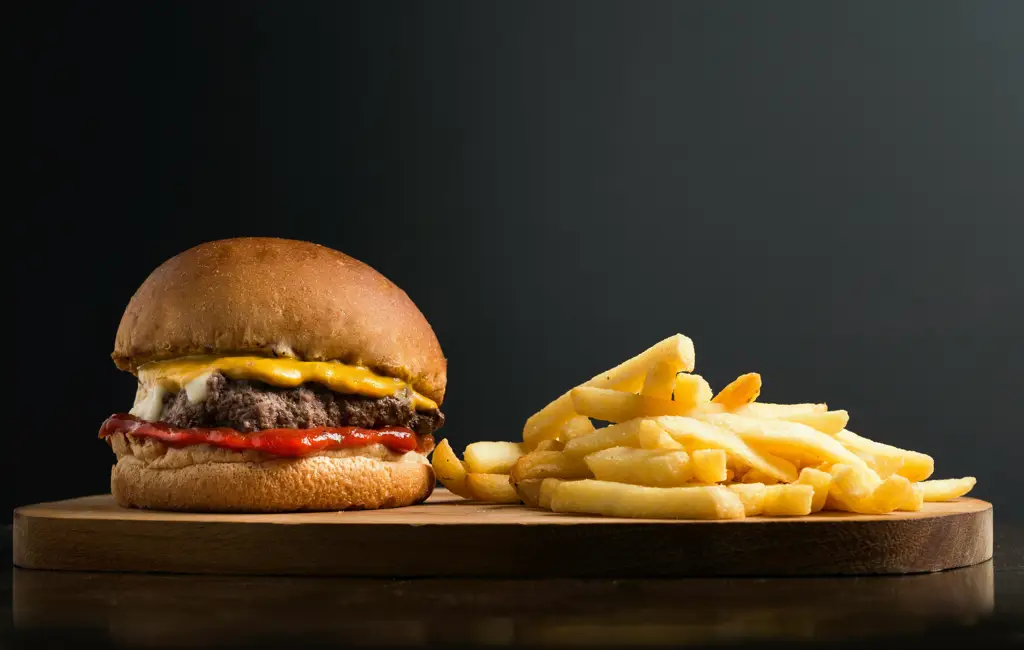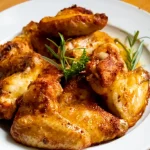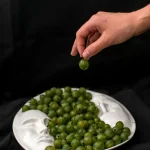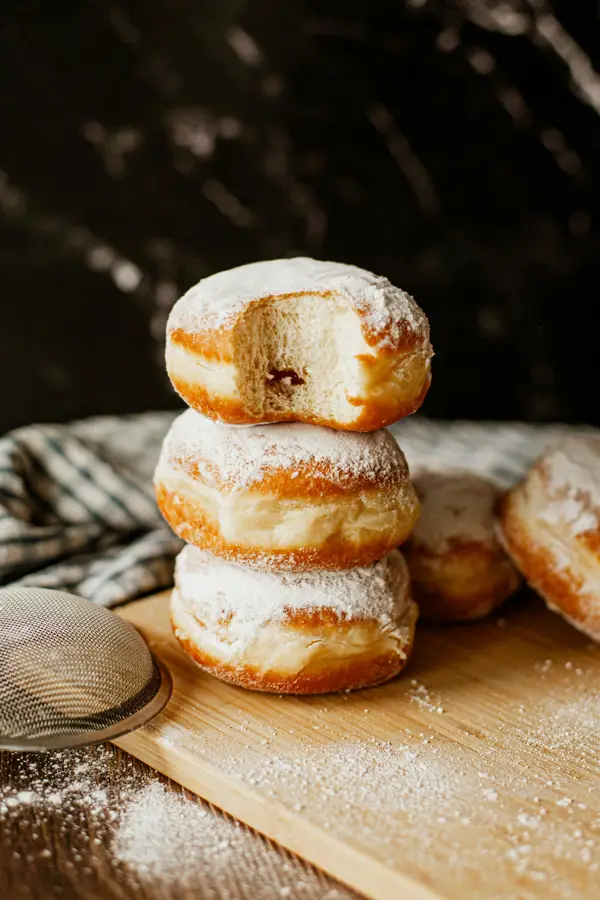Grilled chicken, a culinary staple across the globe, boasts a history as rich and varied as its preparation methods. While pinpointing its exact origin is impossible, evidence suggests that the practice of grilling meat dates back millennia. Ancient civilizations, from the Greeks and Romans to indigenous cultures across the Americas, utilized fire to cook their food, with poultry likely featuring prominently in their diets. The simplicity of grilling – requiring only fire and meat – made it a practical and efficient cooking method, regardless of technological advancements. Today, chicken is the most commonly consumed poultry worldwide, with an estimated global production exceeding 100 billion birds annually. This widespread popularity underlines its versatility and accessibility.
The honey mustard sauce, a more recent addition to the culinary landscape, emerged as a fusion of flavors from different cultures. Honey, a natural sweetener used for centuries across various cuisines, from ancient Egypt to modern-day Asian cooking, provides a touch of sweetness and complexity. Mustard, on the other hand, boasts a diverse history, with evidence suggesting its use in ancient Greece and Rome. The combination of these two ingredients, creating a tangy yet sweet glaze, likely arose in the 20th century, possibly within the context of American barbecue culture, where the blending of sweet and savory flavors is a common theme. The exact origin of the honey mustard sauce remains somewhat obscure, but its popularity speaks to its appealing balance of sweet, tangy, and slightly spicy notes.
The pairing of grilled chicken with honey mustard sauce is a testament to culinary innovation and the ongoing evolution of food traditions. It represents a harmonious blend of ancient techniques and modern flavor profiles. The simplicity of the grilled chicken, a timeless method of cooking, is elevated by the vibrant and complex honey mustard sauce, creating a dish that is both satisfying and adaptable. Its appeal spans across cultures and demographics, making it a popular choice for casual meals, barbecues, and family gatherings worldwide. The ease of preparation and the availability of ingredients contribute to its enduring popularity. This recipe, therefore, explores not only a delicious meal but also a journey through culinary history and global food trends, showcasing the enduring power of simple, yet flavorful, combinations.
Ingredients and Measurements
This recipe yields approximately 4 servings of succulent grilled chicken with a tangy honey mustard glaze. The quantities listed below can be easily adjusted to accommodate a larger or smaller group. Remember to always adjust cooking times based on the thickness of your chicken breasts. Thicker breasts will require longer grilling time.
For the Chicken:
- 4 boneless, skinless chicken breasts (approximately 6-8 ounces each): Choosing chicken breasts of similar size ensures even cooking. If you have uneven-sized breasts, you may need to adjust grilling times accordingly. Smaller breasts will cook faster than larger ones. Look for firm, plump breasts with a light pink color, avoiding any discoloration or unusual odors.
- 1 tablespoon olive oil: Olive oil adds flavor and helps to prevent the chicken from sticking to the grill. You can substitute with other neutral-flavored oils like avocado oil or vegetable oil.
- 1 teaspoon salt: Use kosher salt or sea salt for the best flavor. Table salt is more concentrated and may require a slight reduction in quantity. Do not be afraid to season generously!
- 1/2 teaspoon black pepper: Freshly ground black pepper is always preferred for its superior aroma and taste. Pre-ground pepper can be used in a pinch.
- 1/2 teaspoon garlic powder: Garlic powder adds a savory depth of flavor that complements the chicken beautifully. You can substitute with 1 small clove of fresh garlic, minced, if desired.
- 1/4 teaspoon paprika (optional): A dash of paprika adds a subtle smokiness and vibrant color to the chicken.
For the Honey Mustard Sauce:
- 1/2 cup honey: Use a good quality honey for the best flavor. The type of honey you choose will affect the flavor profile of the sauce – a darker honey will have a more robust taste. Ensure the honey is not crystallized; gently warm it if necessary.
- 1/4 cup Dijon mustard: Dijon mustard adds a sharp, tangy flavor that balances the sweetness of the honey. You can substitute with whole grain mustard or yellow mustard, adjusting the amount to taste.
- 2 tablespoons apple cider vinegar: Apple cider vinegar provides a pleasant acidity that cuts through the richness of the honey and mustard. White wine vinegar can be used as a substitute.
- 1 tablespoon soy sauce (or tamari for gluten-free): Soy sauce adds a savory depth and enhances the overall flavor of the sauce. Use low-sodium soy sauce if you are watching your sodium intake.
- 1 teaspoon Worcestershire sauce (optional): Worcestershire sauce adds a complex umami flavor. Omit if you prefer a simpler sauce.
Important Note: Always ensure your chicken is thoroughly cooked to an internal temperature of 165°F (74°C) before serving. Use a meat thermometer to check for doneness. Undercooked chicken can be dangerous, so accurate temperature checking is crucial.
Equipment List
Grilling chicken to perfection requires the right tools. This equipment list details everything you need to make delicious honey mustard grilled chicken, from preparation to serving. Careful selection of your equipment will significantly impact the final result, ensuring even cooking and a beautiful presentation.
First and foremost, you’ll need a grill. This could be a gas grill, charcoal grill, or even a grill pan for indoor use. For the best results, a gas grill offers consistent temperature control, which is crucial for perfectly cooked chicken. If using a charcoal grill, ensure you have enough charcoal briquettes and a chimney starter for efficient lighting. A grill pan, while convenient for indoor cooking, may require slightly higher heat and more frequent flipping to achieve similar browning.
Next, you’ll need tools to handle the chicken safely and effectively. A pair of long-handled tongs is essential for flipping the chicken without burning your hands. These should be sturdy and ideally made of stainless steel for easy cleaning. You’ll also need a meat thermometer – a digital instant-read thermometer is highly recommended for accurate temperature checks. This is crucial for ensuring the chicken reaches a safe internal temperature of 165°F (74°C) to prevent foodborne illnesses. Don’t rely on visual cues alone; a thermometer guarantees food safety.
Preparation of the chicken requires specific tools as well. A large cutting board (at least 12 x 18 ) provides ample space for working with the chicken safely. Always use a separate cutting board for raw meat to prevent cross-contamination. You’ll need a sharp chef’s knife (8-10 inches) for trimming any excess fat or skin from the chicken breasts. A smaller paring knife can be helpful for more detailed trimming. Measuring cups and spoons are essential for accurate measuring of the honey mustard sauce ingredients.
For marinating the chicken (optional but recommended), a large, resealable plastic bag (gallon size) or a shallow glass dish (at least 9×13 inches) will be sufficient. Using a resealable bag allows for even marination, ensuring the chicken is thoroughly coated. If using a dish, ensure the chicken is fully submerged in the marinade. Finally, you will need serving plates and utensils for presenting your delicious grilled chicken with honey mustard sauce.
In summary, the optimal equipment list includes: a gas grill (or charcoal grill/grill pan), long-handled tongs, a digital instant-read meat thermometer, a large cutting board, an 8-10 inch chef’s knife, a paring knife, measuring cups and spoons, a large resealable plastic bag or shallow dish (for marinating), and serving plates and utensils. Investing in quality equipment will elevate your grilling experience and contribute to consistently delicious results.
Chicken Preparation (Marinating/Brining)
Properly preparing your chicken is crucial for achieving juicy, flavorful grilled chicken. This involves either marinating or brining, both of which tenderize the meat and infuse it with delicious flavors that complement the honey mustard sauce. While both methods are effective, they offer different benefits.
Marinades work by using acidic ingredients (like vinegar, lemon juice, or yogurt) to break down the chicken’s proteins, tenderizing the meat. They also add flavor through herbs, spices, and aromatics. A good marinade for grilled chicken should be flavorful, but not overpowering, allowing the honey mustard sauce to shine.
Here’s a recipe for a simple yet effective marinade:
- 1/4 cup olive oil
- 1/4 cup apple cider vinegar
- 2 tablespoons honey
- 1 tablespoon Dijon mustard
- 1 teaspoon garlic powder
- 1 teaspoon onion powder
- 1/2 teaspoon paprika
- 1/4 teaspoon black pepper
- 1/2 teaspoon dried thyme
- 1 pound boneless, skinless chicken breasts, cut into 1-inch thick pieces
Instructions for Marinating: Whisk together all the marinade ingredients in a bowl. Add the chicken pieces, ensuring they are fully coated. Cover the bowl and refrigerate for at least 2 hours, or preferably overnight. The longer the chicken marinates, the more flavorful it will be, but don’t exceed 24 hours to prevent over-tenderizing.
Brining, on the other hand, involves submerging the chicken in a saltwater solution. This process increases the chicken’s moisture retention, resulting in incredibly juicy and tender grilled chicken. Brining is particularly effective for leaner cuts of chicken that tend to dry out during grilling.
Here’s a recipe for a simple brine:
- 4 cups water
- 1/4 cup kosher salt
- 2 tablespoons brown sugar
- 1 tablespoon black peppercorns
- 2 bay leaves
- 1 pound boneless, skinless chicken breasts
Instructions for Brining: Combine water, salt, brown sugar, peppercorns, and bay leaves in a large bowl or zip-top bag. Stir until the salt and sugar are dissolved. Add the chicken breasts, ensuring they are fully submerged. Cover and refrigerate for at least 4 hours, or preferably 6-8 hours. Do not brine for longer than 12 hours, as this can make the chicken too salty. After brining, rinse the chicken thoroughly under cold water before grilling.
Choosing between Marinating and Brining: If you are short on time, marinating is a quicker option. However, for the ultimate in juicy grilled chicken, especially if using leaner cuts, brining is highly recommended. You can even combine both methods for extra flavor and moisture, but ensure to adjust the marinating time accordingly.
Regardless of your chosen method, always ensure the chicken is thoroughly cooked to an internal temperature of 165°F (74°C) before serving. Use a meat thermometer to check the temperature in the thickest part of the chicken.
Grilling Techniques (Temperature, Time, and Doneness)
Grilling chicken to perfection requires a delicate balance of temperature, time, and ensuring it reaches a safe internal temperature. The key is to achieve a juicy, flavorful interior without burning the outside. We’ll cover the specifics for achieving this with your honey mustard chicken.
Temperature Control: The ideal grilling temperature for chicken breasts is between 350°F and 400°F (175°C and 200°C). Using a meat thermometer is crucial for accuracy. Too low a temperature will result in dry, overcooked chicken, while too high a temperature will lead to burning before the inside is cooked through. Avoid placing the chicken directly over high-heat flames; instead, aim for a consistent, medium heat across the grilling surface. You can achieve this by adjusting the vents on your grill or by indirectly grilling (placing the chicken slightly away from the direct heat source).
Time and Thickness: The cooking time depends heavily on the thickness of your chicken breasts. For average-sized (about 1-inch thick) breasts, you should plan for approximately 6-8 minutes per side. Always use a meat thermometer to check for doneness, regardless of time. Thicker breasts (over 1.5 inches) may require an additional 2-4 minutes per side, or even indirect grilling for a portion of the cooking time to ensure even cooking.
Checking for Doneness: The most reliable method for determining doneness is using a meat thermometer. Insert the thermometer into the thickest part of the chicken breast; it should register an internal temperature of 165°F (74°C). This ensures that the chicken is fully cooked and safe to eat. Do not rely solely on visual cues, as the chicken may appear cooked on the outside while still being undercooked inside. Undercooked chicken can be dangerous, so always prioritize using a thermometer.
Indirect Grilling Technique for Thicker Breasts: For thicker chicken breasts, consider using an indirect grilling method. This involves placing the chicken on a cooler part of the grill, away from the direct flames. Close the grill lid, allowing the heat to circulate evenly. This method helps prevent burning the outside while ensuring the inside cooks thoroughly. You may need to rotate the chicken halfway through to ensure even cooking. Remember to continue monitoring the internal temperature with your meat thermometer.
Resting the Chicken: Once the chicken reaches the desired internal temperature, remove it from the grill and let it rest for 5-10 minutes before slicing and serving. This allows the juices to redistribute throughout the meat, resulting in a more tender and flavorful final product. Resting is a crucial step often overlooked, but it makes a significant difference in the quality of your grilled chicken.
Troubleshooting: If your chicken is browning too quickly, move it to a cooler area of the grill or reduce the heat. If it’s taking too long to cook, increase the heat slightly. Remember that consistent monitoring and adjustments are key to achieving perfectly grilled chicken every time.
Honey Mustard Sauce Preparation
The honey mustard sauce is the star of this grilled chicken recipe, complementing the savory chicken beautifully. This recipe focuses on creating a balanced sauce that’s both sweet and tangy, with a pleasant mustard bite. We’ll be using Dijon mustard for its sharp, complex flavor, but you can experiment with other mustards like whole grain or stone-ground for a different texture and taste profile.
Ingredients:
- 1/2 cup Dijon mustard (good quality is key!)
- 1/4 cup honey (preferably a lighter honey for a brighter flavor)
- 2 tablespoons apple cider vinegar
- 1 tablespoon olive oil
- 1 teaspoon Worcestershire sauce (adds depth of umami)
- 1/2 teaspoon garlic powder
- 1/4 teaspoon onion powder
- Pinch of cayenne pepper (optional, for a subtle kick)
- Salt and freshly ground black pepper to taste
Instructions:
Begin by combining all the ingredients in a medium-sized bowl. Ensure you use a bowl that’s large enough to easily whisk the ingredients together. A smaller bowl might lead to splashing and messy preparation.
Using a whisk, thoroughly combine all the ingredients. Whisk vigorously for at least one minute to ensure the honey is fully incorporated and the sauce is smooth and emulsified. This step is crucial for achieving a consistent texture and preventing separation.
Taste the sauce and adjust the seasoning as needed. You might want to add more honey for extra sweetness, more Dijon mustard for a stronger tang, or more vinegar for a sharper bite. Remember, taste is subjective, so feel free to customize it to your preference. Adding a pinch of salt and freshly ground black pepper enhances the overall flavor profile.
Once you’ve achieved your desired flavor balance, cover the bowl and refrigerate the sauce for at least 30 minutes. Allowing the sauce to chill enhances the flavors and allows them to meld together beautifully. This chilling period is highly recommended; however, if you’re short on time, you can use the sauce immediately.
Professional Tip: For a smoother, even richer sauce, you can briefly blend the sauce using an immersion blender after whisking. This creates an incredibly smooth and luxurious consistency. However, whisking alone is sufficient to produce a delicious honey mustard sauce.
Serving Suggestion: Serve the honey mustard sauce alongside your grilled chicken. You can also use it as a marinade before grilling, or even as a dipping sauce for fries or vegetables. The possibilities are endless!
Storage: Store leftover honey mustard sauce in an airtight container in the refrigerator for up to a week. The flavors will continue to develop over time, making it even more delicious!
Combining Chicken and Sauce
Once your grilled chicken is cooked to perfection and removed from the heat, the next crucial step is properly combining it with the honey mustard sauce. This step ensures that every bite is flavorful and juicy. The method you choose depends on your preference for sauce consistency and the level of chicken browning you desire.
Method 1: Sauce Toss (for a more evenly coated chicken) This method works best if you prefer your chicken to be generously coated and slightly saucier. Once the chicken has rested for about 5 minutes (this allows the juices to redistribute, resulting in more tender meat), slice it into bite-sized pieces or leave it whole depending on your preference. Place the chicken pieces in a large bowl. In a separate smaller bowl, add your prepared honey mustard sauce (recipe should be detailed in a previous section, but assuming you have approximately 1 cup). Pour the sauce over the chicken and gently toss to coat evenly. Ensure you don’t over-toss, as this can shred the chicken. Use tongs or two forks to gently lift and turn the chicken, ensuring all pieces are generously coated. If you’re using a whole grilled chicken, baste it liberally with the honey mustard sauce.
Method 2: Drizzle and Serve (for a less saucy presentation) This method is ideal if you prefer a less intense sauce and want to maintain a cleaner presentation. After the chicken rests, arrange the sliced or whole chicken pieces on a serving platter. Then, drizzle the honey mustard sauce generously over the top. Use a spoon or a small squeeze bottle for precise control, allowing you to evenly distribute the sauce without over-saturating the chicken. This method allows the sauce to sit on top, creating a visually appealing contrast and maintaining a slightly crispier texture on the chicken skin.
Method 3: Glaze and Grill (for maximum flavor penetration and caramelization) This method requires a bit more active participation during the grilling process, but results in intensely flavorful chicken with a beautifully glazed finish. During the last 5-7 minutes of grilling, reduce the heat to medium-low. Then, using a basting brush, generously coat the chicken with the honey mustard sauce. Continue to baste every minute or so, allowing the sauce to caramelize and create a delicious, sticky glaze. Be careful not to burn the sauce; keep a close eye on it and adjust the heat as needed. This method is particularly effective with bone-in chicken pieces.
Important Considerations:
- Temperature: Ensure the chicken is not too hot when you add the sauce, as this can cause the sauce to splatter or become too thin.
- Sauce Consistency: Adjust the amount of sauce based on your personal preference and the size of your chicken. You can always add more sauce later if needed.
- Resting Time: Allowing the chicken to rest before adding the sauce is crucial for maintaining its juiciness and preventing it from becoming dry.
- Storage: Leftover chicken and sauce can be stored in an airtight container in the refrigerator for up to 3 days.
No matter which method you choose, remember that the key is to achieve an even distribution of the honey mustard sauce, resulting in a flavorful and satisfying grilled chicken experience.
Recommendations for Grilled Honey Mustard Chicken
To achieve perfectly grilled honey mustard chicken, several key recommendations should be followed. First, ensure your chicken is properly thawed and patted dry before grilling. This will promote even cooking and beautiful grill marks. Don’t overcrowd the grill; leave space between the chicken pieces for optimal airflow and even browning. Use a meat thermometer to ensure the chicken reaches an internal temperature of 165°F (74°C) for food safety. This is crucial to prevent undercooking and potential foodborne illnesses.
For the honey mustard sauce, adjust the sweetness and tanginess to your preference. You can add more honey for a sweeter sauce or more Dijon mustard for a sharper flavor. A touch of lemon juice or apple cider vinegar can also enhance the complexity of the sauce. Consider adding a pinch of garlic powder or onion powder for an extra layer of flavor. Experiment with different types of mustard, such as whole grain or stone-ground, for a unique taste.
Regarding serving suggestions, this grilled chicken is extremely versatile. It’s delicious served on its own, alongside a simple green salad or roasted vegetables. Consider serving it in a sandwich or wrap with your favorite toppings like lettuce, tomato, and onion. The honey mustard sauce adds a delightful sweetness that pairs well with various breads and toppings.
For complementary dishes, consider serving your grilled honey mustard chicken with classic sides like creamy mashed potatoes, fluffy rice pilaf, or a vibrant quinoa salad. The richness of the chicken and sauce complements the starchy sides perfectly. A fresh, crisp coleslaw or a simple green bean casserole provides a nice contrast in texture and flavor. For a more substantial meal, pair the chicken with grilled corn on the cob or roasted asparagus.
Storage is important to maintain freshness and quality. Allow the chicken to cool completely before storing it in an airtight container in the refrigerator. It should be consumed within 3-4 days. You can also freeze the cooked chicken for up to 3 months. Remember to thaw it completely in the refrigerator before reheating. Reheat gently in a skillet, oven, or microwave until heated through.
Nutritional Information (per serving, approximate): The nutritional content will vary depending on the size of the chicken breast and the ingredients used in the honey mustard sauce. However, a typical serving of grilled chicken breast (approximately 4 ounces) contains roughly 165-190 calories, 30-35 grams of protein, 3-5 grams of fat, and less than 1 gram of carbohydrates. The addition of the honey mustard sauce will increase the calorie and carbohydrate content, but it remains a relatively healthy and balanced meal.
Important Note: These nutritional values are estimates and can vary based on specific ingredients and portion sizes. For precise nutritional information, use a nutrition calculator and input the exact ingredients and quantities used in your recipe.





